A history of innovation: Berkeley founders, movements that influenced our culture
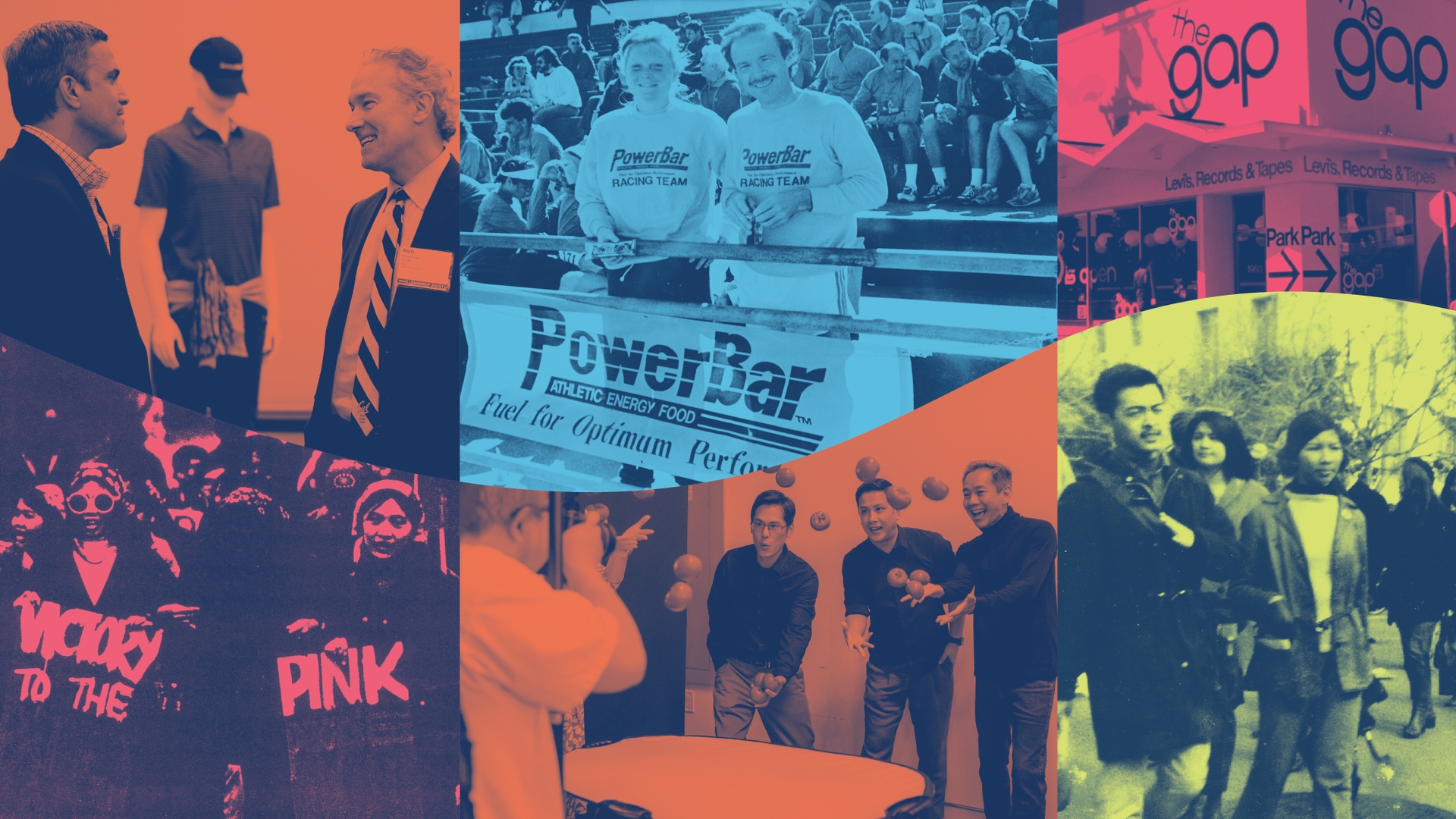
Neil Freese/UC Berkeley
February 22, 2024
This is the second story in a Berkeley News series highlighting UC Berkeley innovators, researchers and entrepreneurs from throughout history who have improved the way we live. Share your nominations by emailing us at [email protected].
Visit the Entrepreneurship at Berkeley site for more information about how the Berkeley community is creating innovative and equitable solutions to society’s greatest challenges.
A rich tapestry of cultural innovations are woven into the history of UC Berkeley, from the seismic waves of the Free Speech Movement that reverberated across the nation in the 1960s to the technological leaps catalyzed by the inception of Apple computers that forever changed how we access information.
The campus has also been a mecca for cultural movements that have bucked the status quo, be it the Disability Rights Movement or the avant-garde psychedelic explorations of Timothy Leary. Through the decades, Berkeley’s community of innovators has left indelible marks on societal progress and cultural discourse.
That history on campus happens today, as students, staff and faculty continue to change the culture of how we live and work.
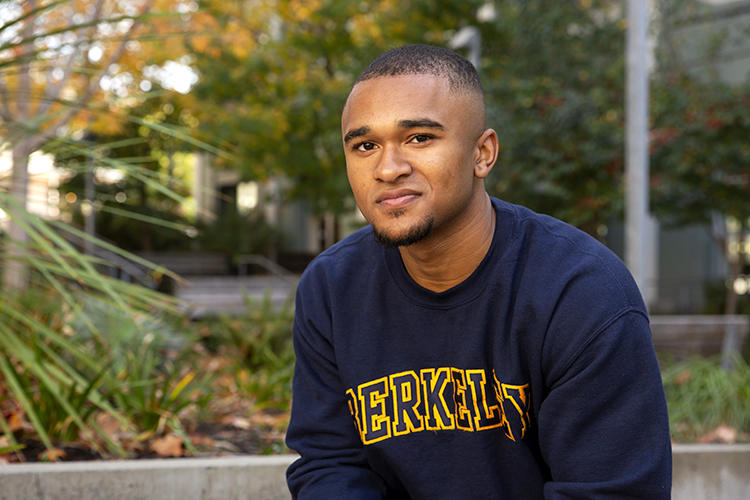
Brittany Hosea-Small for UC Berkeley
Berkeley alumnus Kai Korber and his startup company have created the app Joy: AI Wellness Platform that employs artificial intelligence to recommend bite-sized mindfulness activities tailored to an individual’s emotional state. Koerber’s team crafted an algorithm explicitly intended to identify a person’s emotions by analyzing the sound of their voice, disregarding the specific words or language used.
The technology holds the promise of reshaping how we approach trauma and mental health.
“It comes as no surprise to hear about new innovations and ideas occurring on campus every day,” said Berkeley Chief Officer of Innovation and Entrepreneurship Rich Lyons. “It’s really a testament to the ecosystem and culture of changemaking that has existed at Berkeley throughout the years. We continue to stand as a crucible for transformative ideas.”
Here are Berkeley innovators and movements that have already changed our culture and the way we navigate and see the world around us.
PowerBar: Setting the bar for energy
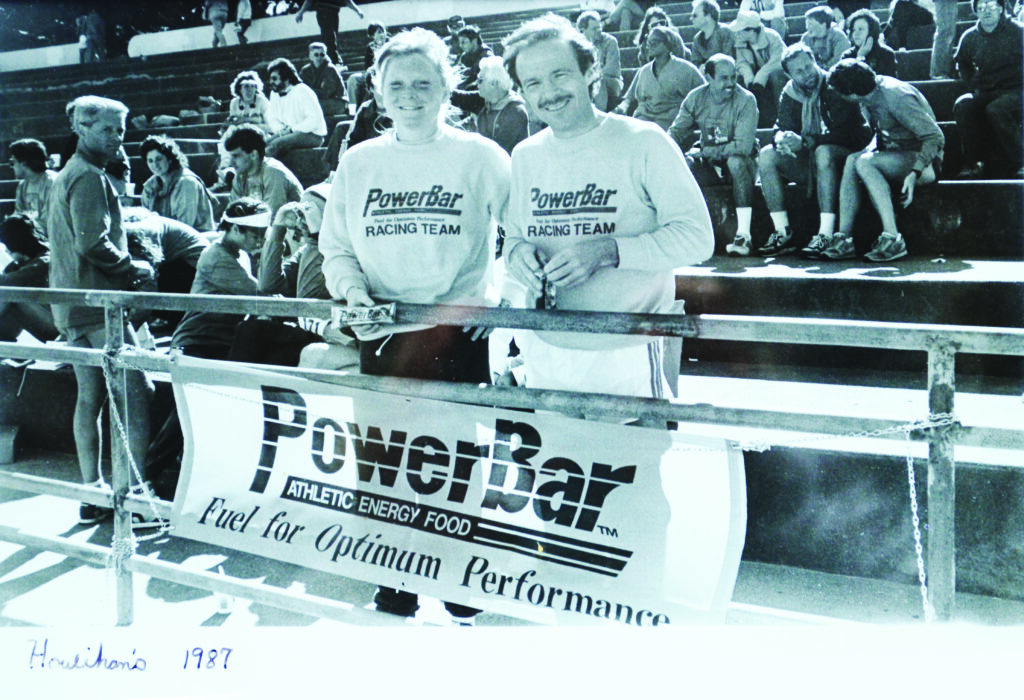
Courtesy of Jennifer Maxwell
It’s common today to pack an energy bar in your pocket or bag before a lengthy hike, bike excursion or even to run a marathon. Quick energy foods during a high endurance activity give extra oomph to pull you through.
And consumers have a $3 billion market full of energy bars to choose from, many of them tied to Berkeley students and alumni. Members of the campus community have created products including Clif, Luna and Z bars, which emerged in the 1990s. Tiger’s Milk bars, which date back to the 1960s, also have Berkeley roots.
However, the surge in popularity for these grab-and-go bars didn’t become a cultural phenomenon until the PowerBar was introduced to the general public in the mid 1980s by alumni Jennifer and Brian Maxwell.
Brian Maxwell, a former Berkeley track athlete, had the idea for what would become PowerBar in 1985, when he was a track coach at Berkeley. His goal was to produce an edible training tool to better sustain marathon runners. He met his future wife, Jennifer Biddulph, who was also on the track team and majoring in food science nutrition.
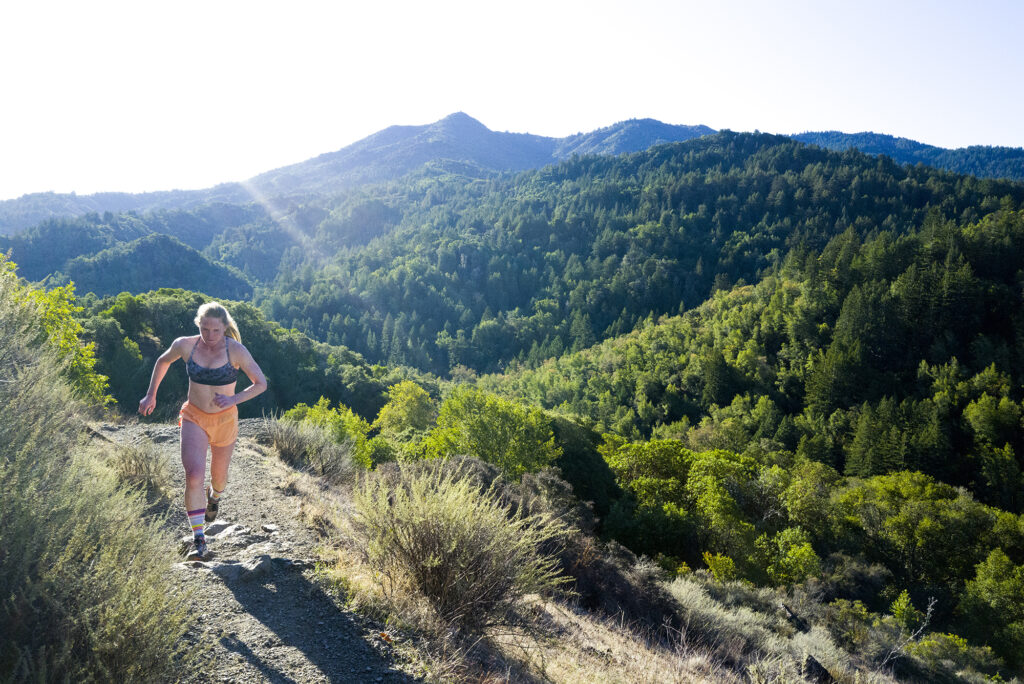
Courtesy of Jennifer Maxwell
The two gradually perfected a formulaic recipe and the product was launched in 1987.
Biddulph, who became Jennifer Maxwell after the couple married, said most athletes would only eat dried toast before a race. But PowerBar would give athletes fuel to compete — without leaving them feeling heavy or sluggish .
“We were looking scientifically at what athletes needed in order to get that extra 1% to 2% edge in their performance,” she said. “It was partly trial and error, but we delivered a formula that was tasty, had a shelf life, great texture and could be produced in mass quantities.”
PowerBars didn’t contain hydrogenated oils, differentiating them from all other food products at the time. She said their recipe also added branched-chain amino acids to help increase endurance, and a proprietary vitamin and mineral blend. She credits her work with Berkeley Professor George Brooks in the exercise and physiology department, and knowledge she was learning as a student-athlete, to the creation of PowerBar’s ingredients.
The early days of the company, she said, were purely grassroots.
The first PowerBars were crafted in the couple’s apartment in Berkeley and distributed and sold to runners and cyclists at sporting events. The pair also frequented parking lots and placed fliers and order forms under car windshields for customers to make purchases via mail.
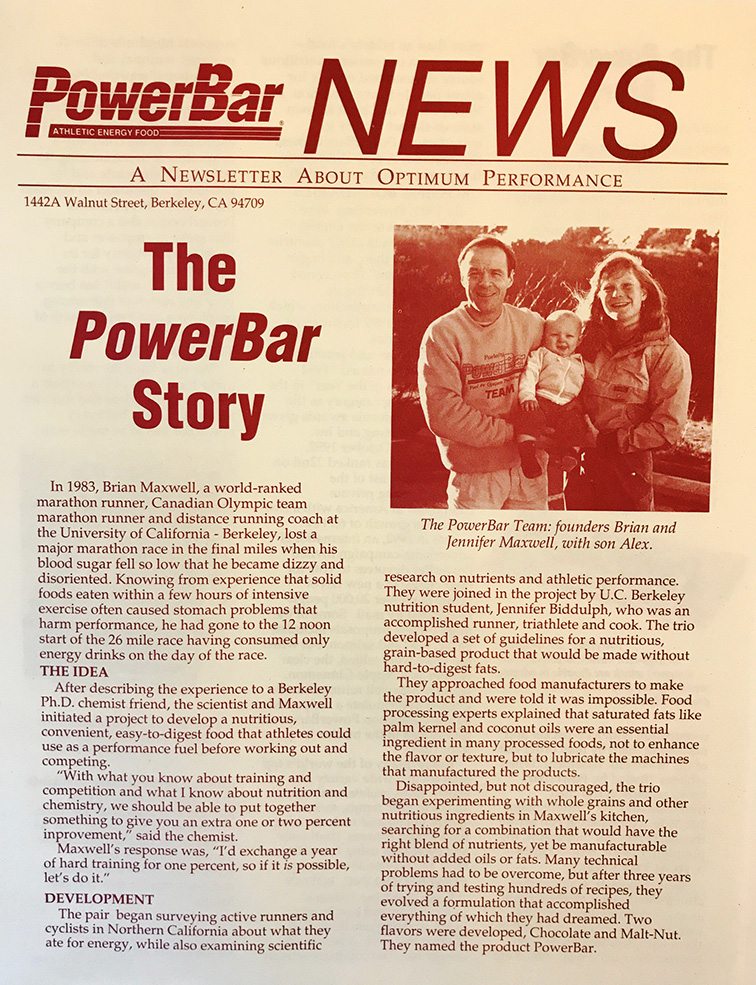
Courtesy of Jennifer Maxwell
Jennifer Maxwell, who was a student then, said she would fulfill orders during her lunchtime and leave PowerBars for customers to pick up on her front porch.
“It was a very small operation,” she said. “But we really began to grow rapidly because there wasn’t anything like it specifically designed for athletes.”
While the pair’s primary market was ultra-endurance athletes, within a few years their consumer base morphed into the general public. By the late 1980s, the production of PowerBars moved out of their home and into a facility in Berkeley. Another decade later, expansion took the PowerBar plant to Idaho, but administrative headquarters remained in Berkeley at a towering building at Shattuck Avenue and Center Street.
Jennifer Maxwell said PowerBar was owned by all of its staff members — around 150 people — through an employee ownership program, and the team would eventually reach north of $150 million in sales. In 2000, Nestlé acquired the company for $375 million.
“Transparency, honesty and quality. That is what we brought to PowerBar,” she said. “I would also attribute part of our success to the ability to think freely and outside of the box, traits I think Berkeley is known for.”
Over the years, the Maxwells gave back to Berkeley, with gifts ranging from the turf on Maxwell Field to library and health programs, all to help “spur and foster creativity for others to follow their passions,” Jennifer Maxwell said.
Brian Maxwell, who died in 2004, was honored at a campus memorial service where PowerBar partner and Berkeley alumnus Mike McCollum said of his friend, “Brian claimed trails in the East Bay hills that he made himself. That was typical Brian. If there wasn’t a trail, he would make one.”

Courtesy of Jennifer Maxwell
Throughout the years, Jennifer Maxwell has used music as a way to cope with the loss of her husband, and she plays drums regularly at venues in the Bay Area. Jamming with local bands has also inspired the name of her newest entrepreneurial endeavor, JAMBAR®, a quality organic energy bar made with all-natural ingredients.
Maxwell said the company donates 50% of its profits to organizations that promote music and active living. It’s another way for her to give back, something she hopes future entrepreneurs at Berkeley continue to do on their own journeys.
“Embrace your passions and appreciate how you’re different, so that you can deliver that difference in the marketplace,” she said. “You’ve got to live that difference. It can’t be just an idea. Live the idea.”
The ethnic studies movement: ‘We really shook up the world’
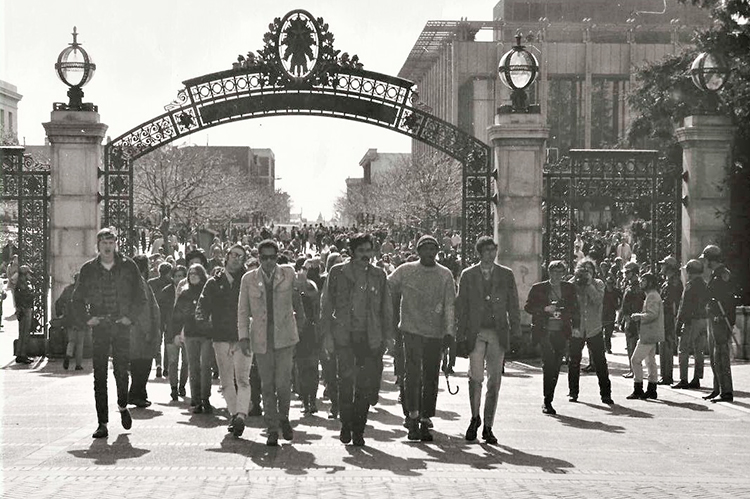
Courtesy of Oliver Jones
Public discourse surrounding the study of ethnic studies and other identity-based histories has become a recurring theme in the political and cultural landscapes of America, sparking debates over the necessity of such curricula in school districts nationwide.
Notably, 19 states, including California, have enacted legislation to require the inclusion of ethnic studies in K-12 schools. But the roots of ethnic studies can be traced to the activism of Berkeley students — and the longest and bloodiest strike in UC history.
In the late 1960s, members of the Third World Liberation Front (TWLF), a multiracial coalition of college students, stood in defiance at Berkeley to demand that the histories of their communities in America be acknowledged, accepted and integrated into higher education.
Over several months in 1969, students passionately protested throughout the entire Berkeley campus, advocating for academic programs that delved into the hidden histories of African Americans, Asian Americans, Chicanos and Native Americans.

Courtesy of Victoria Wong
Their efforts were met with then-Gov. Ronald Reagan declaring an unprecedented state of emergency, and protesters frequently were subjected to physical violence, tear gas attacks, arrests and suspensions.
Berkeley ethnic studies lecturer Harvey Dong was a young conservative student from Sacramento when he came to Berkeley in 1966. Intent on joining the campus’s ROTC program to follow in the footsteps of his father, a World War II veteran, Dong did his own research on the roots of the Vietnam War and became involved in the 1967 and 1968 Stop the Draft Week protests.
His efforts changed his whole outlook on history and how he fit into the politics of America.
Dong actively engaged in the Black Power movement and the decade-long struggle to save the International Hotel, the last standing block of a once thriving Manilatown in San Francisco. He also supported the struggle for immigrant labor rights in San Francisco’s Chinatown.
“We, as young people at the time, felt like we had a responsibility to play a role in changing the mess that we were in,” said Dong, a professor in Berkeley’s Ethnic Studies Department. “So that’s what I did. It was more than just reading about history, it was creating it.”
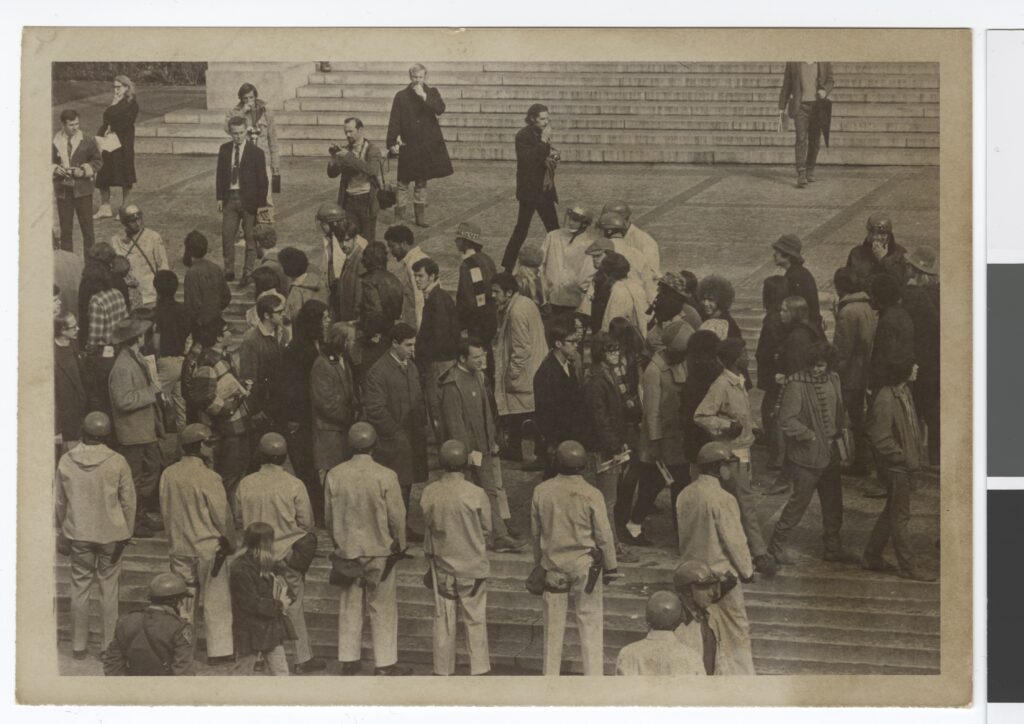
UC Berkeley Ethnic Studies Library
For Clementina Duron, being part of the TWLF was not solely about advocating for the desires of Berkeley students; it was also about expressing solidarity with the broader Third World Movement.
Arriving at Berkeley from Salinas, California, in 1968, Duron became actively involved in campus student coalitions and collaborated with organizations that were strong opponents of the Vietnam War.
“As people of color, immigrants in the United States, to some extent, we, too, felt as though we were an exploited and oppressed minority,” Duron explained. “The TWLF at Berkeley was so transformative for me. I found my voice, my passion, and I knew that solidarity with other students was essential. It still is today.”
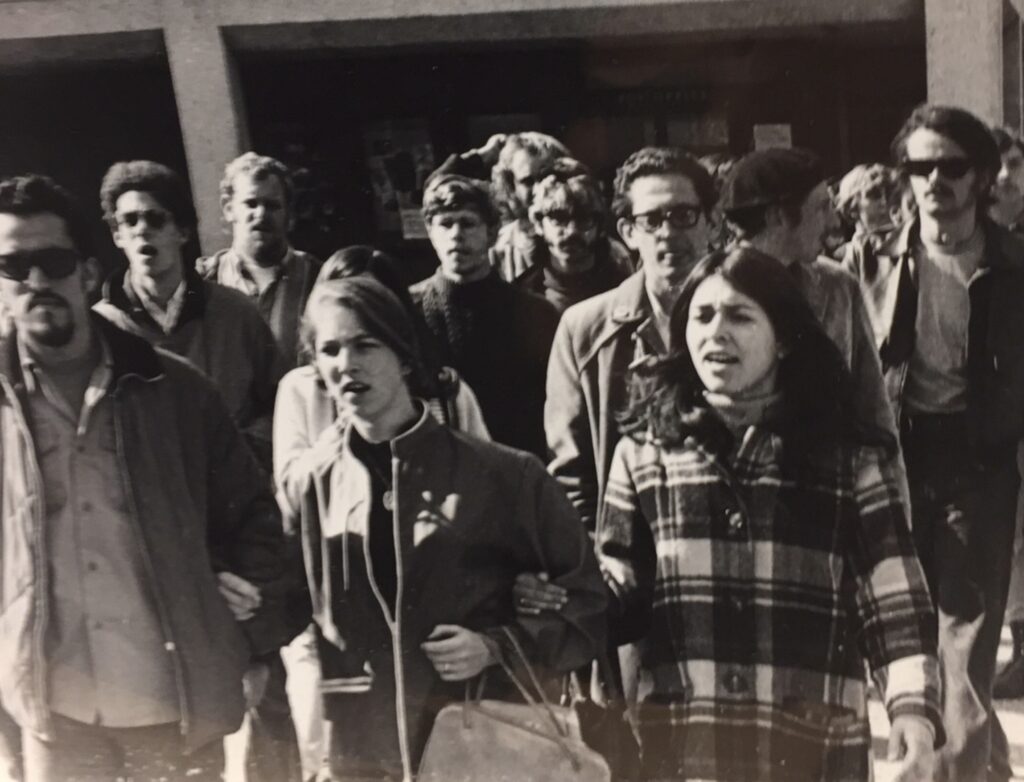
Courtesy of Clementina Duron
While TWLF strikers sought to create their own Third World college at Berkeley, a compromise was reached on March 4, 1969, that resulted in the creation of the Department of Ethnic Studies.
Although Berkeley African American Studies Professor Waldo Martin wasn’t present during the TWLF strike, he acknowledged the profound impact of the history created by those protesters. Their actions, along with academics like Elaine Kim, Evelyn Nakano Glen and Carlos Munoz, Martin said, served as a significant catalyst for intellectuals and activists like himself to choose Berkeley.
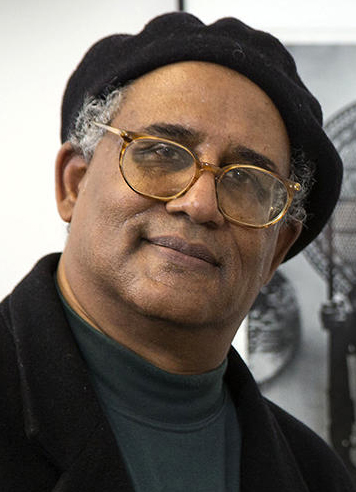
Courtesy of Waldo Martin
“This campus has truly played a pivotal role in transforming the way we teach history in America,” Martin said. “The contributions of ethnic studies scholars such as Ronald Takaki and Michael Omi were genuine inspirations for individuals like myself who sought to comprehend the complexities of race relations beyond our own communities.”
But for Victoria Wong, a TWLF activist then and first-generation Berkeley student, historical narratives of what the strikers did are often overshadowed by more white-led organizations and protests. Wong said TWLF members played a transformative role in shaping education and cultural discourse, and “the Berkeley connection was very important.”
A native of Salinas, Wong came to Berkeley in fall 1966, already a seasoned activist who advocated for farm laborers and anti-war, civil rights and Black Power groups. As a TWLF striker and student, Wong said, “I majored in revolution!” and pushed to broaden the scope of history.
“The makers of history often focus on a few great white men,” said Wong. “But the real history has always been made by the masses of people. And the strike at Berkeley demonstrated the power and community we could build if we all just came together.”
While the TWLF no longer exists, Dong said the remnants of the activists’ work and influence live on through community nonprofits and organizations that continue to mobilize and fight for basic needs on behalf of communities of color across the nation.
Those groups, like the Oakland-based Asian Health Services, were directly born from that movement.
“We needed the learning tools to give back to the community,” said Dong. “And ethnic studies reveals to our students their own history in America, in order to understand their communities in a more personal and nuanced way.”
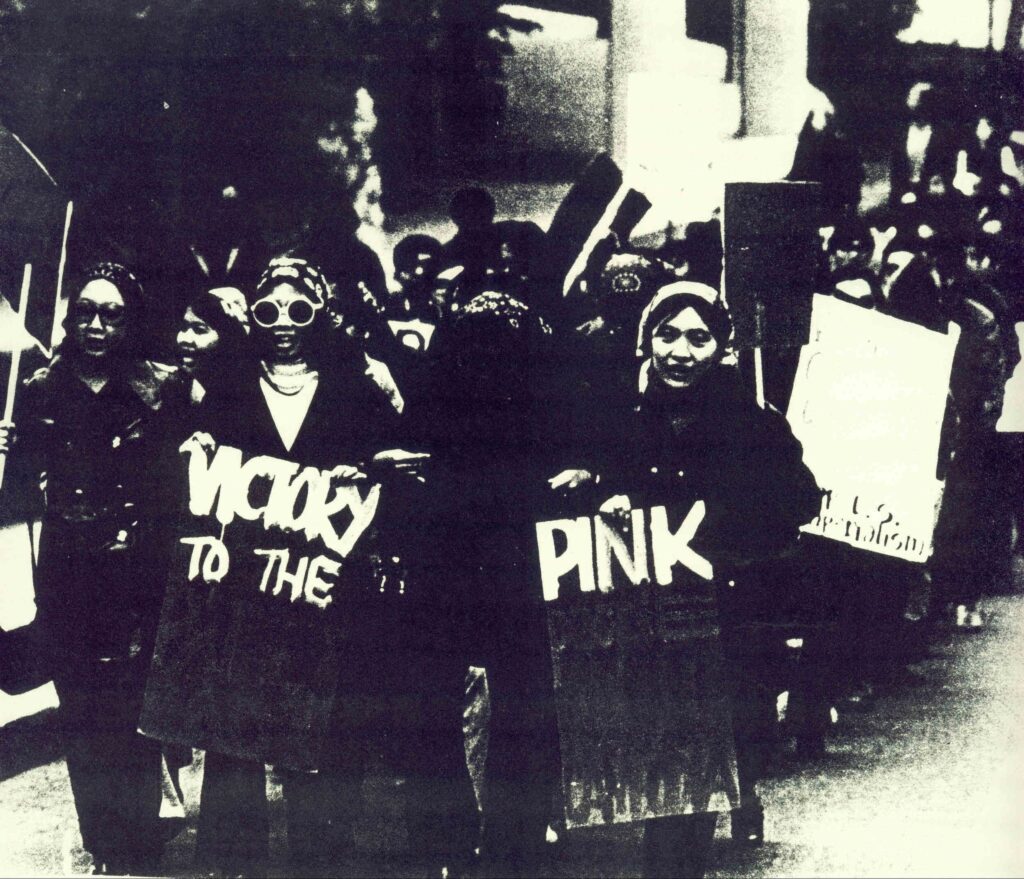
Courtesy of Victoria Wong
Duron and Wong, close friends for over 50 years, joined Dong and Martin on campus recently to discuss TWLF history with California educators. Wong said they continue to stay engaged with the campus and hope to ensure that their struggles and achievements are remembered and inspire the ongoing fight for justice.
“We really shook up the world,” said Wong. “And the newer generations nowadays need to know what we did in order to build on it for themselves.”
Duron added, “I hope what they take from our stories is the extreme importance of community. Joy and love connect us all. And that is transformative.”
Rotten Tomatoes: Films, friends and a lasting Berkeley kinship
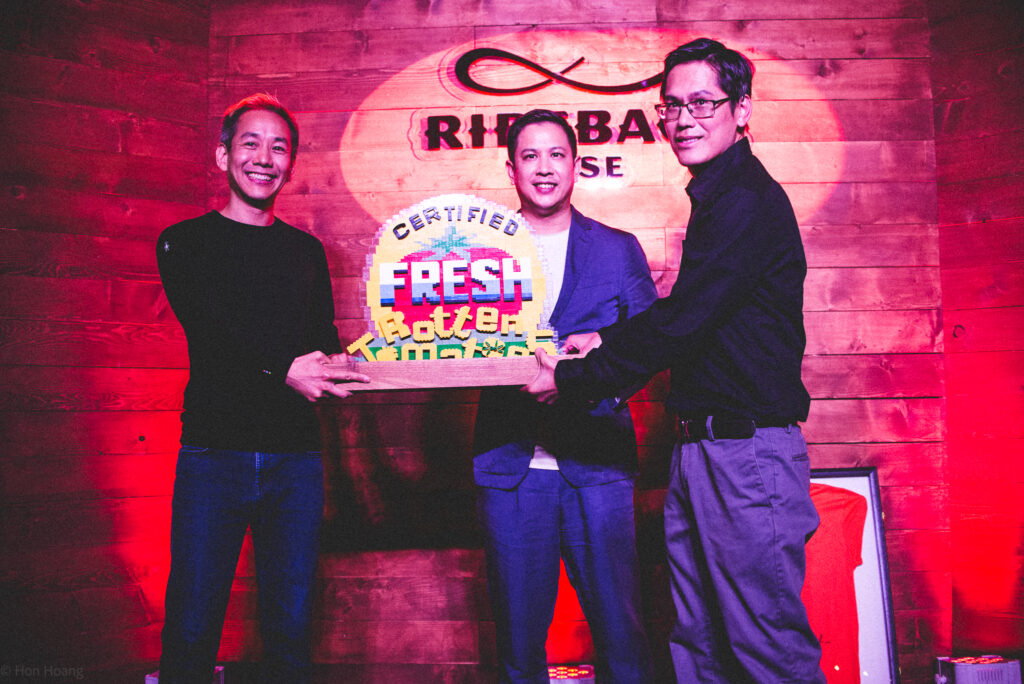
Photo by Hon Hoang
Everyone’s a critic.
And today, the number of online platforms where anyone can critique everything from restaurants to businesses to vacation spots is unlimited. But before sites like Yelp existed, moviegoers had Rotten Tomatoes.
A cultural phenomenon, where cinematic aficionados still can give their “fresh” or “rotten” film reviews on the “Tomatometer,” the website fields millions of daily visits and boasts an annual revenue of up to $25 million. Rotten Tomatoes also changed the way we navigate movie consumption, providing the general public with alternative movie critiques from the masses.
The website began with three friends: Berkeley undergraduates who loved movies and were great at coding and web design.
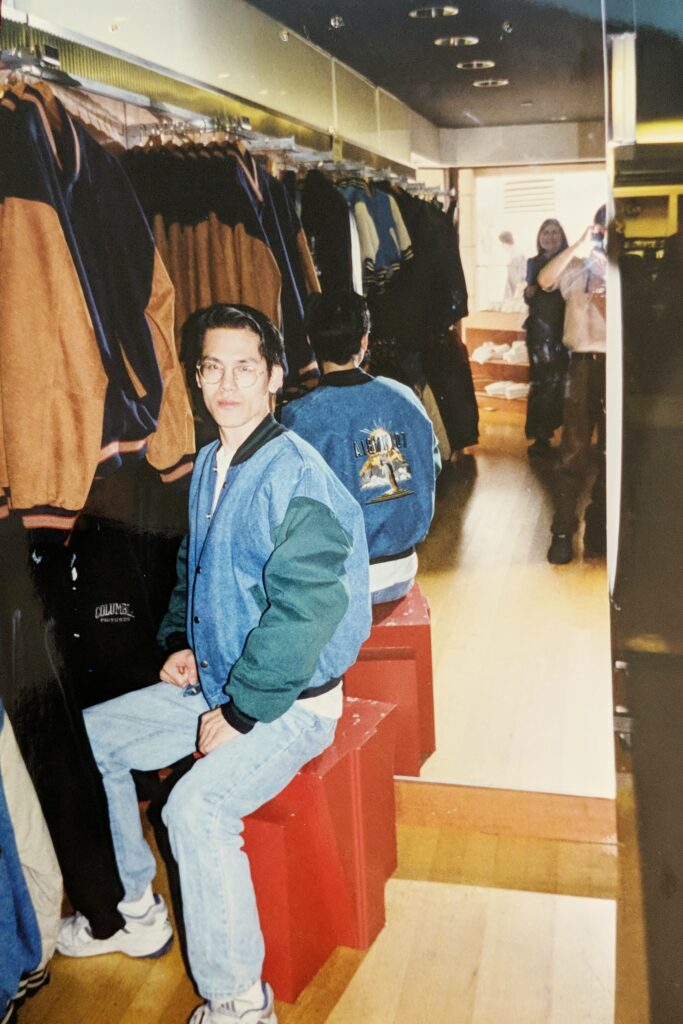
Courtesy of Patrick Lee
In 1998, Senh Duong, an interdisciplinary studies and civil engineering major, got the idea to create Rotten Tomatoes when he couldn’t find a credible online review for the new Rush Hour movie starring Jackie Chan. He said he thought, “Maybe other people are having the same problem.”
An avid Chan fan, Duong spent the weeks waiting for the movie premiere by coming up with his website’s key elements: the Tomatometer, fresh and rotten review icons and the Rotten Tomatoes name, inspired from the French-Canadian film Léolo, where a son imagines his mother getting pregnant by falling into a cart of tomatoes.
Movies would be rated by what percentage of reviewers felt they were rotten, or fresh.
Duong quickly built the website, pulling all-nighters to gather film reviews, then coded the site. When he saw the spikes in traffic, he knew he needed to make it a viable business.
Berkeley cognitive science major Patrick Lee met Duong their freshman year while living in Berkeley’s Unit 3 residence hall. Lee introduced another student, Stephen Wang, to Duong a year later. Lee met Wang through the UC Martial Arts Program.
The trio had similar backgrounds, growing up steeped in Chinese culture. They also found common bonds spending time on campus practicing wushu, a Chinese martial art, with the Berkeley Wushu club.
They also organized martial arts performances at Zellerbach Hall. Their methods of promotion at Berkeley seem eerily similar to student groups advertising themselves on Sproul Plaza today.
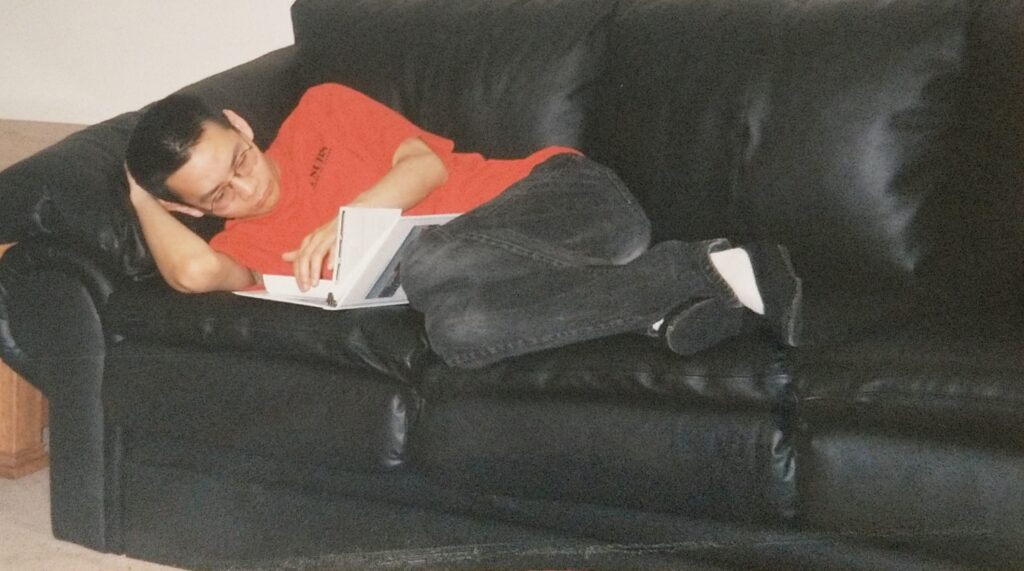
Courtesy of Patrick Lee
“If you’re willing to sandwich board on Sproul in the middle of winter for two weeks, that probably shows you have enough grit and tenacity to do startup life,” Wang said.
But the three students, who became close friends, really connected through their fascination with movies, specifically films featuring Hong Kong legends like Chan, Jet Li and Stephen Chow. Lee recalled sitting in Duong’s Priestley Hall dorm room watching marathons of the latest Kung Fu flicks, like Once Upon a Time in China, on his tiny television.
When Duong asked Wang and Lee to help make Rotten Tomatoes profitable, the two students were already running a web design agency they co-founded, Design Reactor. But Rotten Tomatoes “was quite a genius, outside-of-the-box idea,” said Wang.
The three began working out of an office across from Shattuck Cinemas in Berkeley and quickly began to promote the website, while attempting to balance their rigorous school and work schedules.
Resources from Berkeley’s Haas School of Business and the architecture and engineering programs were vital to the team, Wang said, and included help from creative staff members, supportive faculty members, and the free use of high-end animation programs and computer labs.
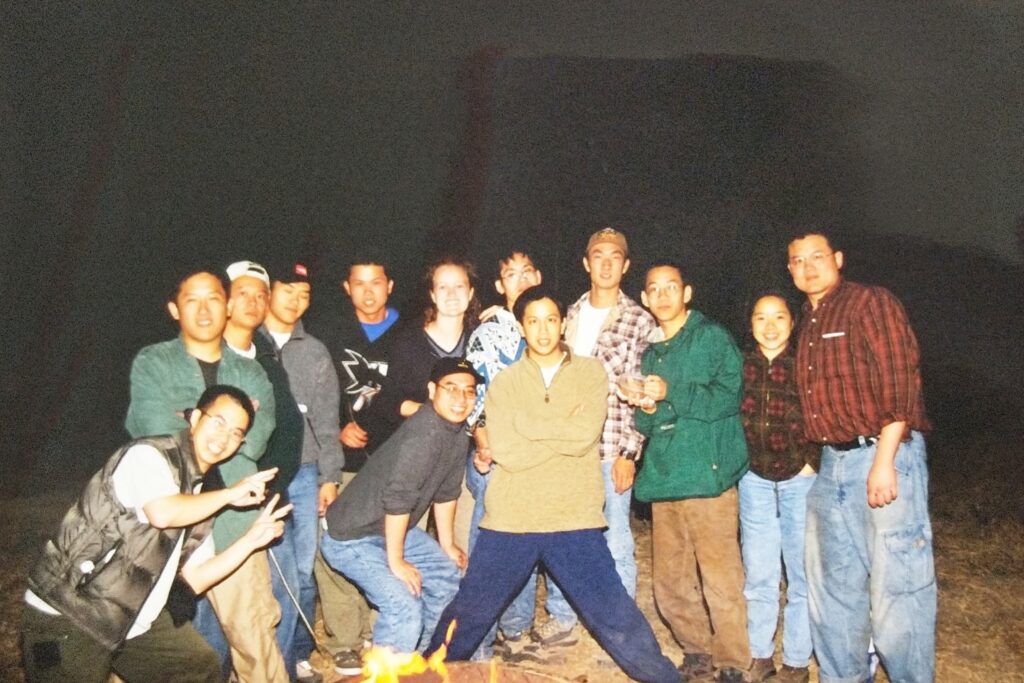
Courtesy of Patrick Lee
They reminisce about their days at Berkeley: the late nights watching movies and playing video games till the sun came up, the trips to Las Vegas and San Diego Comi-Cons and the deep bonds that continue to bind them.
“It was a time when the Internet was just starting to get bigger, and we were connecting with each other with the sense that we could get together to do something that could affect everything,” Lee said. “I think that was huge.”
And being around that creativity energy “where everyone is building something,” is what Duong remembers most.
“Berkeley is at the center of so much innovation and technological progress,” Wang said. “I just felt pretty confident that our group of really smart people would find something that would put a dent in the world.”
Gap: It’s about more than selling clothes
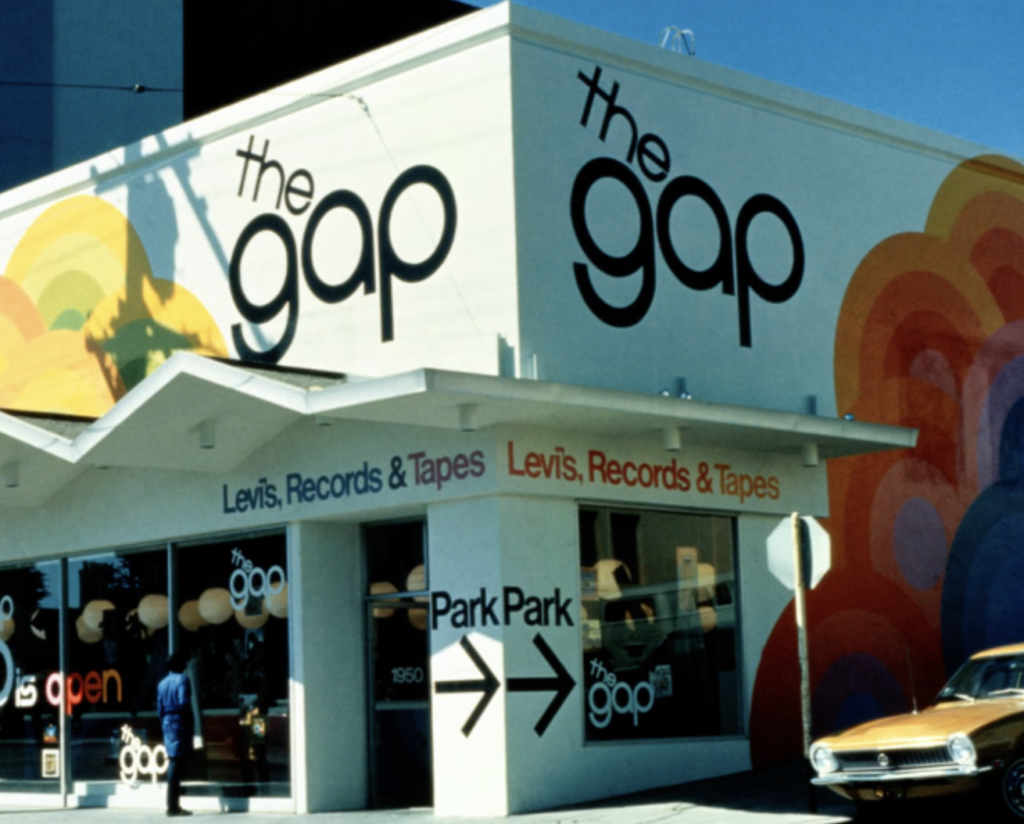
Courtesy of the Gap
You’ve seen Gap’s iconic blue square logo on huge billboards around the world and its leisurewear sported by celebrities like Madonna, Michael J. Fox and Missy Elliot. Wander into any mall in the country and you’ll encounter its expansive storefronts offering casual clothing for consumers of all ages.
The company has evolved throughout the decades — it’s now valued at over $7.5 billion — and features four distinct brands that continue to take the commercial fashion world by storm, not by following cultural trends, but by creating its own.
But when Gap founder and Berkeley alumnus Donald Fisher started the company in 1969 with his wife, Doris, he simply did so to give people a place to find pants that fit.
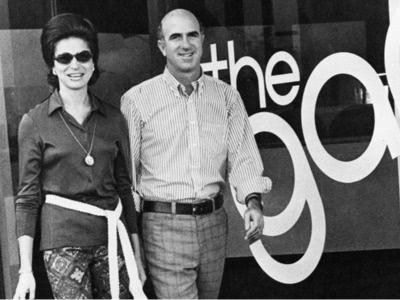
Courtesy of the Gap
A 1951 graduate of Berkeley’s business school, Fisher first had a job renovating hotels. He leased Sacramento retail space to a Levi Strauss & Co. branch owner. But when Fisher went to another Levi’s branch to return a pair of jeans that didn’t fit, it didn’t have his size. He realized that the Sacramento branch was the only Levi’s store that presented an entire wall of jeans in different sizes.
At the time, offering such variety was an uncommon retail practice.
Looking to expand on that innovation, Donald and Doris Fisher opened their first store and named it The Gap, after the term “Generation Gap.” Initially focusing on teenage, college-aged and hippie consumers, the store sold Levi’s jeans in all sizes, along with vinyl records and tapes. The couple would eventually stick to clothing and found success not only in selling Levis, but casual basics like plain T-shirts, turtlenecks and their signature khakis.
In 1972, the Fishers introduced the Gap label, making history with the first retail chain to adopt its store name as the brand name. A year later, the Gap filed a successful initial stock offering.
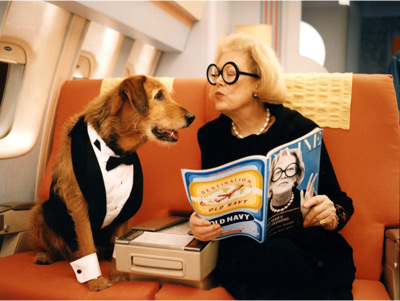
Courtesy of the Gap
Over the years, through a series of iconic ad campaigns in the 1980s and 90s, the company expanded its clothing line and branding base by purchasing clothing companies like Banana Republic, Old Navy and Athleta.
Donald Fisher served as the Gap’s CEO until 1995 and was chair of the board until 2004. As co-founders of the company, the Fishers compiled a $1.5 billion net worth.
The couple also made significant contributions to various Berkeley programs, including the Fisher Center for Real Estate and Urban Planning and the Fisher Center for the Strategic Use of Information Technology at the Haas School of Business. The western entrance to the Berkeley Haas campus — the Doris and Don Fisher Gate — is named in their honor.
Donald Fisher also received the California Alumni Association’s Alumnus of the Year award in 2007 — the highest honor bestowed upon a Berkeley graduate.
Following Donald Fisher’s passing in 2009, Rich Lyons, who today is Berkeley’s vice chancellor and chief officer of innovation and entrepreneurship, reflected on Fisher’s focus on education and the lasting connections he made on campus, saying, “Don was always there for me and our students with advice and a deep perspective. His legacy will endure at [Berkeley] for generations to come.”

Courtesy of the Gap
Donald Fisher’s values live on, the Gap President and CEO Mark Breitbard said, and have sustained the company’s success.
“We want to make sure we’re having positive impacts on people in the communities in which we’re doing business around the world, in many different layers and respects,” said Breitbard. “It’s an expectation to do this in how we live and in how we lead.”
Breitbard, who graduated from Berkeley’s Haas School of Business in 1997, said that, like the Gap, Berkeley gave him the freedom as a student to pursue business “without leaving my values at the door.”
Berkeley’s influence on the Gap is apparent, he said, not only in the priorities the Fishers stressed throughout the years, but in the talented people they attracted to the company, many of them Berkeley alumni.
“From the very beginning, they said, ‘Let’s do more than sell clothes,'” Breitbard said. “And there are really strong legacies at UC Berkeley, from the Fishers to Levi Strauss, that prove running a company is more than just doing business. That’s what Gap is all about, and I’m glad that legacy includes Berkeley. I’m proud to be part of it all.”

UC Berkeley Haas School of Business